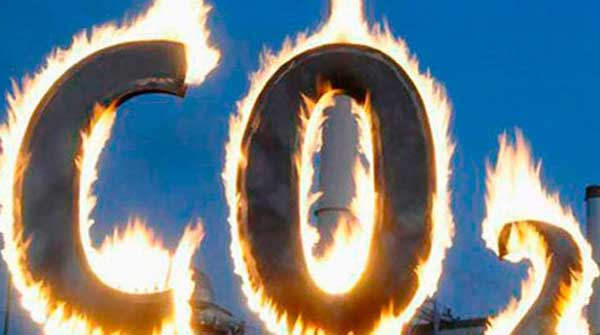Any emissions we cut here will simply pop up in jurisdictions with less stringent environmental regulations
 If Canada were to be carbon neutral tomorrow, it would take China only 21 days to ensure our current annual emissions were put back into the atmosphere.
If Canada were to be carbon neutral tomorrow, it would take China only 21 days to ensure our current annual emissions were put back into the atmosphere.
And it’s only expected to get worse. As a share of the global total, China’s greenhouse gas emissions have risen from 19.4 per cent in 2005 to 27.4 per cent in 2019. Meanwhile, Canada’s shrank from two per cent to 1.6 per cent of the global total over the same period.
Needless to say, with such a small carbon footprint, Canada alone can’t solve climate change.
That has not prevented Ottawa from setting aggressive emissions reduction targets for Canadians. Its plan is so aggressive it aims to eliminate nearly half our emissions by 2030, which will lead to drastic cuts to the standard of living for Canadian families and a reduction in the bottom line for Canadian businesses. We can also expect it to be accompanied by a fast-increasing carbon tax.
 |
| Related Stories |
| Capping energy industry emissions is all pain, no gain
|
| Oil Sands Divestment campaign won’t reduce global emissions
|
| Alberta’s success in reducing emissions
|
The Trudeau government alleges that reducing Canada’s emissions will help reduce worldwide emissions, despite criticism that it will lead to widespread economic and social harm, is wildly unrealistic, and will even trap Indigenous Canadians in poverty.
Adding insult to injury, there’s a good chance the Trudeau government’s emissions reduction targets will not achieve its goal of greening our environment. With the way the plan is designed, a decent share of any emissions we cut here will simply – like a game of environmental Whac-a-Mole – pop up elsewhere.
This is due to a phenomenon known as “carbon leakage,” where investment and industrial activity, and the associated emissions (often in energy-intensive sectors), shift or “leak” from one jurisdiction to another where carbon taxes are lower and emissions standards are likely not as stringent.
Let’s look at aluminum. Both China and Canada are major aluminum producers, but production in Canada doesn’t emit nearly as much pollution into the atmosphere as production in China. By some measures, Canadian aluminum is about seven times greener than Chinese aluminum.
Logically, we should be trying to attract as many aluminum smelters here as possible and make it more advantageous for consumers to buy Canadian aluminum. Unfortunately, Canadian aluminum producers are currently less competitive due to the added costs of carbon taxes. This is a clear-cut case of the loss of competitiveness due to locally focused emissions reduction schemes actually making things worse for the planet.
But by Ottawa’s reckoning, as long as these extra tonnes of greenhouse gases don’t get emitted within our borders, it’s a reason to pop open the champagne and celebrate.
If our reductions are having no impact on the global climate, are the concessions that Canadians are making worth it?
It will take only nine days (or less!) for China to erase the cuts made by Ottawa’s emissions reductions plan through 2030. The constrained production, lost jobs, and forgone quality of life improvements (not to mention government revenues) through 2030 will be quickly invalidated by Chinese emissions.
This is why our governments need to shift their focus from reducing local emissions to measuring their climate strategies’ global impact. It should take into consideration that reducing global emissions may actually mean an increase in local or domestic emissions.
The Trudeau government’s greenwashing, which leads to Canada exporting emissions (and jobs), doesn’t help anybody. We’re too small an emitter for our efforts alone to make a difference.
Krystle Wittevrongel is a senior policy analyst and Alberta project lead at the Montreal Economic Institute.
For interview requests, click here.
The opinions expressed by our columnists and contributors are theirs alone and do not inherently or expressly reflect the views of our publication.
© Troy Media
Troy Media is an editorial content provider to media outlets and its own hosted community news outlets across Canada.


Analysis like this always ignores the fact Canada’s oil emissions are three times the global average, due to its reliance on polluting bitumen production. Oil production from virtually anywhere else would actually reduce global emissions, which is what counts. And pointing to Canada’s percentage of global emissions doesn’t diminish from the fact that we are among the highest per capita emitters (twice the global average), which is the real measure if you look at it democratically, with every person’s emissions equal across the world. So get real and stop with the greenwashing – the real answer is to get off all oil and gas asap.
Analysis like this always ignores the fact Canada’s oil emissions are three times the global average, due to its reliance on polluting bitumen production. Oil production from virtually anywhere else would actually reduce global emissions, which is what counts. And pointing to Canada’s percentage of global emissions doesn’t diminish from the fact that we are among the highest per capita emitters (twice the global average), which is the real measure if you look at it democratically, with every person’s emissions equal across the world. So get real and stop with the greenwashing – the real answer is to get off all oil and gas asap.